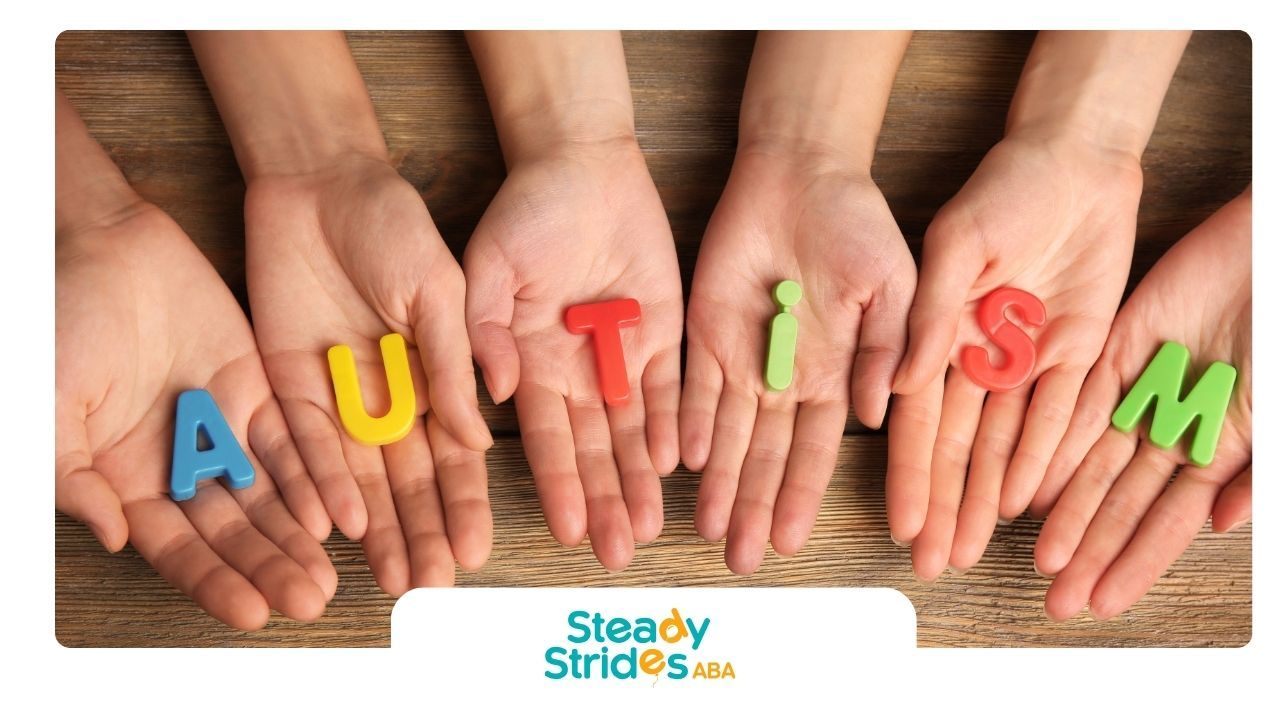Understanding Autism Shutdowns
Definition and Characteristics
Autistic shutdowns can sneak up like a quiet storm—a subtle but powerful response to overwhelming stress. When someone hits shutdown mode, they might pull back from their surroundings, go silent, and temporarily lose certain abilities. These shutdowns often fly under the radar for people who don't know what signs to watch for, leading to misunderstandings.
Typical signs of shutdowns include:
- Pulling away from social interactions
- Not responding to what's happening around
- A kind of
situational mutism where speaking becomes super tough or impossible
- A sense of numbness or disconnect
Shutdowns are the brain's way of hitting "pause" to cope with overload. It's like a self-protective reboot that helps someone regain control when everything's too much.
Triggers for Shutdowns
Lots of things can flip the switch to shutdown mode. Getting a grip on these triggers is key to knowing when a shutdown might strike and how to help the person through it.
Common triggers include:
| Trigger Type | Examples |
|---|---|
| Sensory | Loud sounds, overpowering smells, blinding lights |
| Emotional | Feeling anxious, frustrated, sad |
| Informational | Too much info, social pressures |
Shutdowns do a couple of things: they raise the red flag that someone's stressing out and help them deal with that stress. They often follow on the heels of a meltdown, helping the person calm back down.
Figuring out specific autistic shutdown triggers is key for coming up with plans to reduce how often they happen and support those going through them. For more details on shutdown symptoms, check out our page on autistic shutdown symptoms.
Differentiating Shutdowns and Meltdowns
Knowing how autistic shutdowns and meltdowns differ helps offer the right support. Both are ways to cope with too much stress, but they show up in unique ways.
Coping Mechanisms
Shutdowns and meltdowns kick in when things get too overwhelming, but they go about it in different ways. Meltdowns might involve yelling or crying—big reactions you can't miss. Shutdowns, on the other hand, are all about going silent and pulling away. Even though they fly under the radar, shutdowns can seriously affect someone's day-to-day life. As pointed out by
Reframing Autism, shutdowns let autistic folks tune out stress, giving them a way to deal without big displays.
| Characteristic | Shutdown | Meltdown |
|---|---|---|
| Expression | Internal (withdrawal) | External (outcry) |
| Reaction Intensity | Quiet | Loud |
| Triggering Factors | Sensory overload, tiredness | Intense situations |
| Recovery Time | Varies (short to long) | Often immediate after |
| Impact on Environment | Not obvious | How could you miss it? |
Behavioral Responses
When an autistic person hits shutdown mode, they might stop talking much, seem far away, or temporarily lose skills they had before. They may appear unresponsive, and outsiders might not even notice they're struggling. As noted by Verywell Mind, such behaviors point to serious internal stress.
Contrast this with a meltdown—it's all about loud reactions like shouting or throwing things around. It's sparked by things or feelings that are too much to handle. These reactions underline the disconnect between an autistic person's needs and their surroundings, needing a special approach to help out.
Spotting these differences is crucial for families and professionals working with autistic individuals. By knowing how to spot and deal with each type of response, care and support become way more effective. For more on what shutdown symptoms look like, check out our page on autistic shutdown symptoms.
Impact of Shutdowns
Autistic shutdowns can throw a wrench in both mental and emotional gears, not to mention everyday life. For those cheering on someone dealing with these hassles, grasping the impact is vital.
Mental and Emotional Health
Shutdowns can really mess with a person's head, throwing them off balance mentally. The wear and tear may lead to burnout, skill setbacks, or even spark troubles like depression or anxiety, sometimes tipping into darker thoughts. It's like a heavy emotional backpack that makes it tough to pick up ways to cope or take care of oneself.
| Impact Area | Description |
|---|---|
| Mental Health | Risks of feeling down and anxious |
| Coping Skills | Hard time finding ways to handle stress |
| Self-Care | Jumbled daily self-care routines |
| Emotional Toll | Emotional strain before, during, and after shutdowns |
While shutdowns can act like a shield from life's pressures, getting back to 'normal' can take anywhere from minutes to hours. This unpredictability means they might need some extra hands-on support to bounce back emotionally.
Daily Functioning
When shutdowns hit, everyday life can feel like a bumpy road, messing with how someone communicates, senses the world, keeps on top of chores, and interacts with others. Getting through a workday or school in shutdown mode can tank productivity and social life.
| Function Area | Potential Impact |
|---|---|
| Communication | Trouble talking about needs or emotions |
| Sensory Processing | Sensitivity overload or numbness to sensations |
| Household Management | Ignoring chores and personal care |
| Social Interactions | Keeping away from social gatherings |
| Academic/Work | Struggling to focus and perform |
Putting all these hurdles together can dip the quality of life, which is why it's key to spot what sets off and distinguishes a shutdown from a meltdown. Tackling these hurdles with the right moves and aid can boost well-being and get back on track.
Recognizing Signs of Shutdown
Spotting an autistic shutdown is like having a secret recipe for understanding and supporting someone in need. Shutdowns can show up in bits and pieces, so we can split them into how they hit the body and mess with emotions.
Physical Indicators
These signs are like the body's SOS signals, waving frantically:
| Physical Indicators |
|---|
| Can't find their words |
| Suddenly drained, like a popped balloon |
| Graceless as a cat on roller skates |
| Slow as molasses |
| Tingling or numb all over |
| All thumbs with everyday tasks |
These clues paint a picture of the body's reaction to too much noise and chaos, as the nervous system tries to protect itself. Folks might go silent or drift away, a clear cry for some peace and quiet.
Emotional Indications
The heart and mind do their own dance when things get too much:
| Emotional Indications |
|---|
| Nopes out of socializing |
| Strays away from hobbies they once loved |
| Buzzing with anxiety or feeling out of sorts |
| Feeling like they're on the outside looking in |
These signals point to a struggle with sensory overload. When these signs pop up, it's game time for parents, friends, teachers, and professionals to lend a hand. Remember, during a shutdown, they can't hit the brakes on physical or emotional reactions. So, skip the judgment, offer quiet support, and check in when they're back in their groove.
Coping Strategies for Autistic Shutdowns
Finding ways to handle autistic shutdowns is like learning a new groove in a dance—once you get the steps down, everything flows a little smoother. These shutdowns aren't playing around, but you can tackle them with a couple of solid strategies: carving out a personal retreat and diving into sensory regulation.
Creating a Safe Space
When life's stressors hit like a tidal wave, having a chilled-out nook can work wonders. For our friends on the spectrum, this is not just a want—it's a need. It's their go-to zone for unwinding when they're maxed out. So, if you're setting one up, tailor it to fit like their favorite old sweater. Comfort’s king here, and practicality's the queen.
Here’s what to consider:
| Element | Description |
|---|---|
| Physical Comfort | Comfy chairs, soft lighting, and nothing too flashy—that's the ticket. |
| Sensory Tools | Stock up on noise-canceling headphones, weighted blankets, or stress balls. Anxiety, be gone! |
| Alternative Communication | Have some visual charts or tech gadgets handy for when words fail. |
| Personal Interests | Load it up with their fave stuff—books, art—whatever sparks joy. |
Giving them a space like this helps them map out their shutdown habits and brace for the stressors ahead. It's like equipping them with a compass for navigating life's rough seas.
Sensory Regulation Techniques
Sensory regulation is magic in helping those going through an autistic shutdown. It’s about taking control when everything spins out. Different tricks work for different folks, so tailor your approach like you’re making a perfect playlist for them.
Here's how you can ease the journey:
| Technique | Description |
|---|---|
| Deep Pressure | Think cozy hugs or weighted blankets to mellow the mood. |
| Mindful Breathing | Slow and steady breaths can really help dial down the stress. |
| Sensory Tools | Go for fidget spinners, squishies, or calming scents for a sensory de-clutter. |
| Movement Activities | Jump, swing, stroll—anything to channel those energies and find peace. |
During these moments, be the calming presence, not the noisy crowd. Hold off on the questions; silence is sometimes the best answer. Save the chat for quiet times, when heads are clear, and conversations can really count.
These strategies not only provide comfort but also empower individuals to own their experiences rather than be owned by them. It’s all about turning that chaos into calm, one small step at a time.
Supporting Folks During Shutdowns
When someone with autism goes through a shutdown, the right kind of help can make a world of difference. Knowing how to offer comfort and communicate better creates an environment that's just right for them.
Keeping It Calm and Reassuring
Making the space calm is key when they're shutting down. They might be feeling too much and need to know they're okay and have support. Being there for them can make that overwhelming sensation a little easier to manage.
Here's what helps:
- Speak gently: Using soft words can ease their mind.
- Stay mellow: Keep your movements and expressions easy-going.
- Offer sensory stuff: Things like comfy weighted blankets or headphones that block out noise can reduce sensory overload.
In case you want to dig deeper, remember that these shutdowns can throw a wrench in daily life, stirring up anxiety or even depression.
Here's a quick rundown of these comfort tricks:
| What to Do | Why It Helps |
|---|---|
| Speak Gently | Soft words can calm them down |
| Stay Mellow | Easy movements help keep things chill |
| Offer Sensory Stuff | Blocks out the excess noise or weight helps relax |
Talking It Through
Good communication is key during these times. You gotta keep it simple and give them space, because they might have a hard time with all the info coming at them.
Keep these in mind:
- Use plain words: Short, easy phrases work best.
- Be patient: They might take a while to respond.
- Dodge rapid-fire questions: Ask one thing at a time; let them lead if they seem up to it.
- Show, don’t just tell: If talking's tough, gestures or pictures can help.
Understanding and switching up how we chat to fit their needs is part of supporting them. Shutdowns can mess with how they communicate, sense things, and manage feelings, which might hang around mentally for a while.
By putting these tips to work, families and caregivers can really be there for their loved ones during shutdowns, making them feel safer and understood.













